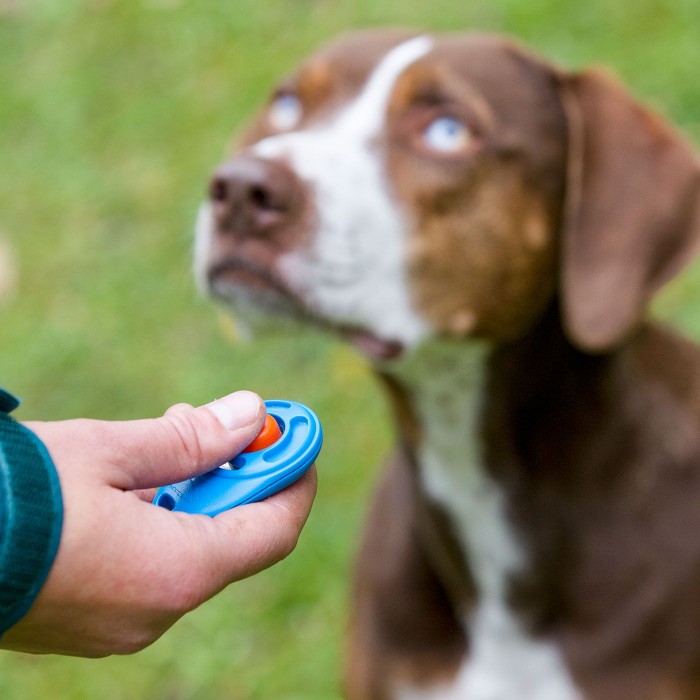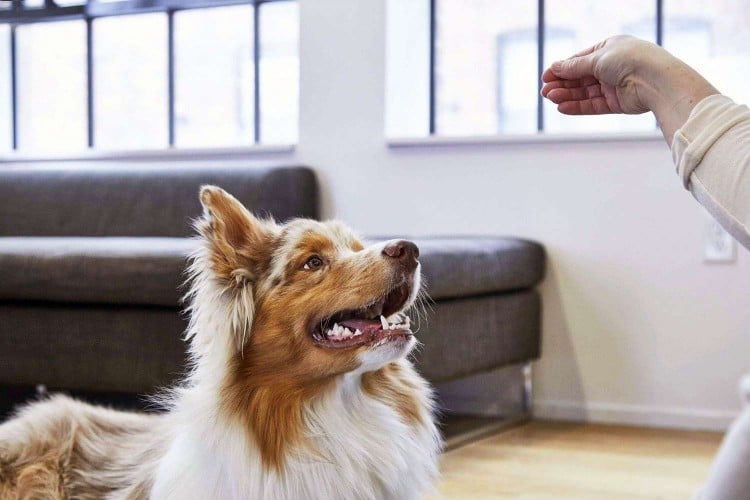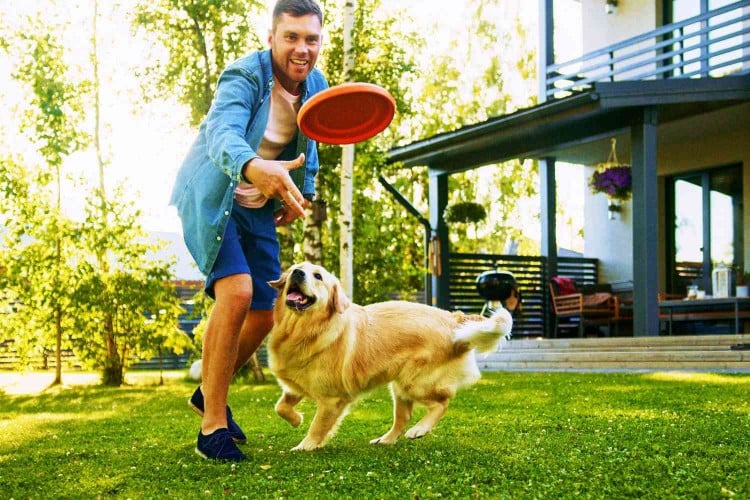
Clicker training dogs is a great technique that incorporates sounds and rewards that will have both you and your pup excited to begin each session. Worried about whether clicker training will work on your pet? Jen Nastanski, CPDT-KA, a behavior specialist at the ASPCA Animal Recovery Center & Canine Annex for Recovery and Enrichment offers effective strategies for you and your dog.
What Is a Clicker, and How Does Clicker Training Dogs Work?
A "clicker" is a small plastic box designed to be held in the palm of your hand, with a small metal tongue that you push to make a clicking sound. If you've watched animal training videos online, chances are you've seen clickers in use.
Clicker training all comes down to that efficient language Nastanski mentioned, and a little positive reinforcement. First, a trainer teaches the dog that every time he hears the clicking sound, he gets a treat. Once the dog understands a click gets him a treat, the trainer uses the click to identify the exact moment when the dog performs the right behavior. "For example," Nastanski says, "if a trainer wants to teach a dog to sit, she'll click the instant his rump hits the floor, and then deliver a tasty treat. With repetition, the dog learns that sitting earns rewards."
Pros and Cons of Clicker Training
Clicker training is considered highly effective: Once dogs learn that a click is always followed by a treat, they can be pretty eager to do whatever it takes to earn treats, again and again. But like any training method, clicker training comes with its benefits and challenges.
One of the benefits of clicker training is that it's a quick way to teach your dog the basics. The positive, reward-based atmosphere in clicker training promotes exploration and your dog's curiosity to learn new tricks and, according to Nastanski, dogs typically begin to understand the clicker within one or two training sessions. Although clicker training can feel repetitive, dogs can stay attentive through it and come to understand what's expected of them.
Of course, there are some challenges to clicker training, such as being required to carry the clicker at all times and your dog's excited feedback to high-value treats. If your dog jumps, barks, or mouths at your hands out of excitement, "finding a different way to deliver the rewards can help make training more comfortable," Nastanski says. Instead of feeding your pup a treat from your hand, you can toss it on the ground.
Timing is very important with clicker training—and if you have challenges timing your clicks with your dog's behavior, you might accidentally reward the wrong behavior. But Nastanski points out dogs are often very forgiving of human error during clicker training, especially when there are rewards involved. If you clicked a little too early or too late, simply adjust so that you reward your dog at the right moment the next time.
If your dog is a bit timid and runs away from the clicker noise, you can soften the volume by keeping it in your pocket or wrapping a towel around your hand. Alternatively, you can use the clicker training method with any unique and consistent sound—some trainers use a whistling sound or simply the word "yes!"
What Age Should You Start Clicker Training?
Clicker training can be started at any age. "While it's true that adult and senior dogs may have more established personalities, these dogs are perfectly capable of learning," Nastanski says. Consistent and regular training sessions are essential for training dogs and dogs of all ages understand cause-and-effect pretty well.
How to Introduce the Clicker to Your Dog
Introducing a dog to the clicker is pretty straightforward. Simply choose a simple behavior you know your dog will do right—sitting on cue, or coming over when you call in a happy voice—and give the signal for that behavior (so say "Sit" or "Come here, my darling dog!"). As soon as your dog does the behavior, click the clicker. Pause for about a half second, then reach for a nearby treat and hand it to your dog.
NOTE: That half-second pause is really important, and you should always pause for a brief moment after clicking before treating.
Repeat this process two or three times, and your dog will almost certainly start to realize that every click is followed by a treat. You can then use the clicker to teach new behaviors, including some fun dog tricks.
Pro Tip: If your dog doesn't know how to respond to any cues yet, choose an activity you know your dog will be likely to do. For example, you can dangle your hand near your dog's nose, and when she goes in for a sniff, click, then pause half a second, and then get and feed a treat. Repeat this a few times, and you're starting to clicker train hand targeting!
Tips for Successful Clicker Training
- Keep your training sessions short—15 minutes or less. "Animals, like children, have short attention spans," Nastanski says. "Make sure you stop training before your pet gets tired of the game."
- It's fine to switch between two or three behaviors within the same session, but it's important to only work on one behavior at a time. If you're teaching your dog to sit, lie down, and raise his paw, it's best to do 10 repetitions of one behavior, and then take a quick play break before moving onto the next behavior.
- Some trainers like to click and deliver a bunch of treats, known as a "treat jackpot," especially when your dog completes a particularly difficult task. Big efforts earn big rewards!





